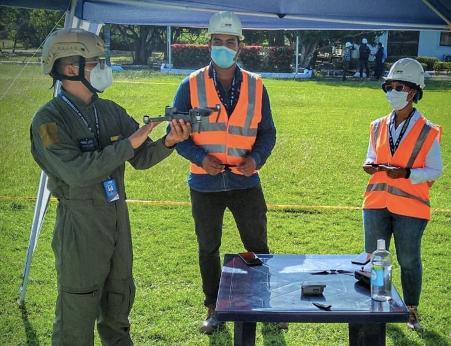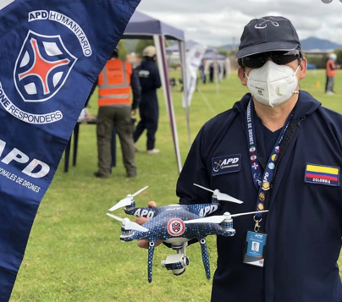Our reality changed at the beginning of 2020. Surely this year will go down in history as the year of the pandemic, or the year of the Coronavirus. Perhaps 2020 is also one of the years that has made humanity reflect the most on our immense fragility.
This was not the only thing the Coronavirus showed us. From the first moments of uncertainty, and as a result of that situation, we realized how much we can contribute. Specifically, those of us who work in the drone industry were able to see all the possibilities that this technology offers.
Internally within my organization, we began to verify the capabilities that Drone technology had to generate positive changes in the midst of so much anxiety. Here are some of the main activities that we developed, and executed:
- Vaccine Delivery with Drones: sometime before the pandemic, we started working with a pharmaceutical organization to deliver medicine with Drones in remote locations in Colombia and Peru. When Covid knocked on our doors, this process accelerated, and we began to develop prototypes and models based on what interesting and successful companies like Zipline were doing.
At this moment we are in the testing phase of a node model with which we hope to serve a significant part of the population in Colombia and from there to reach other countries in the region that will need the help of technology to get ahead.
- Drone spraying in public places: A program that we also tested in some regions of the country was the spraying of sanitizer liquid in popular squares and places, trying to eliminate the possibility of transmission of the virus. This was a failed test, as we realized that it wasn’t efficient, and we didn’t have the results we expected from the elimination of the virus in the fumigated areas.
We learned a lot during this process, the experience as a whole was very meaningful. One of the most important points that we were able to recognize is that there are times when Drones are the best option--for example when they help us to improve any of the success factors of a mission: improve quality, reduce time, reduce risks, reduce costs, or improve efficiency--but if it is not the case, it could be better to use other types of tools instead. In the end we realized that Drones are the best tool in certain specific scenarios, but not in every single situation.
- Drones as a deterrent: one of the uses with which we helped during the most critical stages of the pandemic in Colombia was through the speakers on our Drones.
Using these speakers, we were able to carry messages to the population in places where there was a concentration of people. Messages that emphasized social distancing, health measures, and instructions for the use of masks, among others.

- Food security: in developing countries like Colombia, the magnitude of the consequences of the Coronavirus will not be fully known until a few years from now. However, the first consequences have already been felt. In the early stages of the pandemic, the country reached very significant numbers of poverty, more than 40% of the population is considered to be living in poverty in Colombia, which means they live on less than 100 USD per month!
With drones, we have been supporting programs of different institutions, such as the UN World Food Program, to identify areas of food safety risk and document these places so that actions can be taken to help the country in this difficult situation.
Unicef has shown some of the most prominent uses of Drones in these types of events and situations, where drones can be flown to help many people who may be going through critical moments.
I consider it is our duty to help humanity in the way we use our flying machines, we all can do something from our position as drone service providers. How do you help society with the use of your Drones?
















Comments